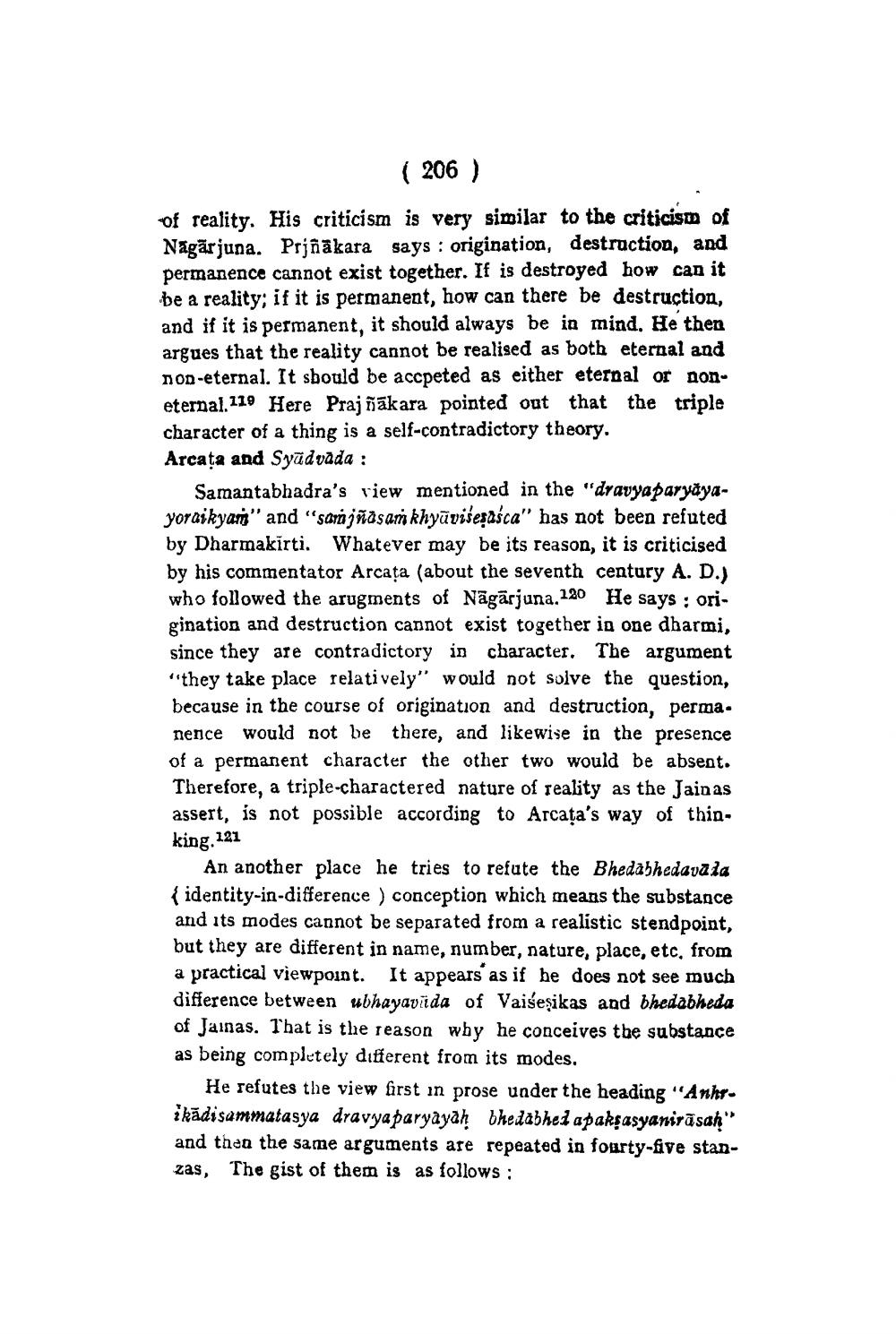________________
( 206 )
of reality. His criticism is very similar to the criticism of Nagarjuna. Prjñākara says: origination, destruction, and permanence cannot exist together. If is destroyed how can it be a reality; if it is permanent, how can there be destruction, and if it is permanent, it should always be in mind. He then argues that the reality cannot be realised as both eternal and non-eternal. It should be accpeted as either eternal or noneternal.110 Here Prajñākara pointed out that the triple character of a thing is a self-contradictory theory.
Arcaṭa and Syüdvāda :
Samantabhadra's view mentioned in the "dravyaparyayayoraikyaṁ” and “saṁjñāsaṁ khyāviśeṣāśca" has not been refuted by Dharmakirti. Whatever may be its reason, it is criticised by his commentator Arcata (about the seventh century A. D.) who followed the arugments of Nagarjuna.120 He says: origination and destruction cannot exist together in one dharmi, since they are contradictory in character. The argument "they take place relatively" would not solve the question, because in the course of origination and destruction, perma. nence would not be there, and likewise in the presence of a permanent character the other two would be absent. Therefore, a triple-charactered nature of reality as the Jainas assert, is not possible according to Arcata's way of thinking, 121
An another place he tries to refute the Bhedabhedavāla { identity-in-difference) conception which means the substance and its modes cannot be separated from a realistic stendpoint, but they are different in name, number, nature, place, etc, from a practical viewpoint. It appears as if he does not see much difference between ubhayavida of Vaisesikas and bhedabheda of Jainas. That is the reason why he conceives the substance as being completely different from its modes.
He refutes the view first in prose under the heading "Anhrikadisammatasya dravyaparyayah bhedabhed apakṣasyanirāsaḥ" and then the same arguments are repeated in fourty-five stanzas, The gist of them is as follows:




